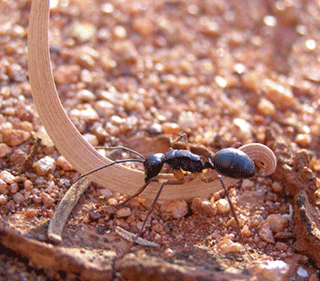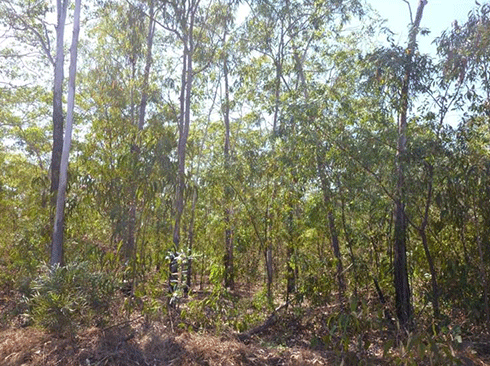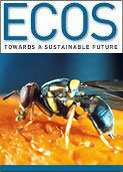
|
Published: 18 November 2013
Are our ecosystems healthy? Ask the ants
Among the various animals used as bio-indicators in environmental management, insects and invertebrates have long been the poor cousins. But according to CSIRO ecologist, Dr Alan Andersen, the humble ant can be a more powerful tool than larger vertebrates for biodiversity monitoring.
‘Ants are the dominant animal group in Australia in terms of biomass, energy and nutrient flow,’ explains Dr Andersen. ‘This means that understanding what they’re doing gives you a good indication of what’s happening in the broader ecosystem.
‘Generally, when you look at the profile of animals from a conservation sense, it’s all to do with vertebrates. Humans are big, visual animals so it’s the big things that capture our attention.’
Ants and mine site recovery
The use of ants as bio-indicators has a long history in mine site rehabilitation in Australia. In the 1970s and 80s, a series of studies at rehabilitated mine sites in the jarrah (Eucalyptus marginata) forests of southwest Western Australia found that ant-species richness was correlated with diversity and abundance of a wide range of other invertebrate groups.
The mining industry was quick to see the potential in the idea that the extent of change in ant communities could be used as an indicator of broader changes in the biological integrity, or health, of an ecosystem.
‘Ants are deeply embedded in all sorts of processes integral to ecosystem health, such as nutrient cycling,’ says Dr Andersen.
‘A large proportion of nutrients in an ecosystem will go through ants. If you go on a picnic and drop a breadcrumb, within a very short period of time an ant will be there picking it up, and that’s what happens in nature.’
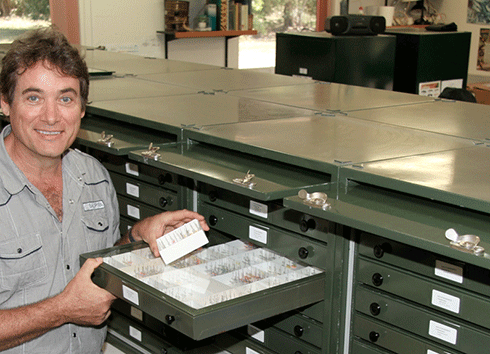
|
|
Dr Alan Andersen with CSIRO’s ant collection in Darwin – the world’s largest collection of Australian ants, with over 5600 species. Credit:
CSIRO
|
The mining industry has driven the use of ants as bio-indicators because mine site rehabilitation tends to be about the creation of a new ecosystem following severe disturbance. Mine environmental managers are therefore not so much interested in the presence of iconic or threatened vertebrate species, but rather in the suite of processes that make up ecosystem functioning – including water retention and plant activity (seed dispersal, germination, litter recycling, and so on).
Ian Rollins works for GEMCO, a subsidiary of BHP Billiton, on rehabilitation of mine sites associated with manganese mining on Groote Eyelandt, in the Gulf of Carpentaria. GEMCO has just embarked on a 5-year pilot study to monitor fauna, including ants, on rehabilitation sites.
‘By using ants and birds as indicators for resource utilisation, we hope to get a better idea of ecosystem structure and functionality,’ says Rollins. ‘Because our end goal is to rehabilitate the land to the condition that it was pre-mining, we are interested in how stable these ecosystems are and how they will be functioning into the future.’
Simplified monitoring protocols
Over time, studies have shown that is not the number of ant species that is most useful, but rather changes in species abundances and overall species composition – known in ecological terms as ‘community structure’.
Thus, for example, groups of species have been shown to be relatively consistent ‘increasers’ or ‘decreasers’ in abundance in relation to disturbance.
‘There are some functional groups that are very highly specialised in terms of, for example, habitat or resource requirements, so they’re particularly sensitive to disturbance,’ says Dr Andersen.
‘Examples include those species that forage primarily within soil and leaf litter. Then you have other groups that are highly generalised and they can tolerate disturbance much better, and other groups again that are actually promoted by disturbance.’
Dr Andersen has played a key role in the development of simplified protocols for sampling of ants, contributing to their cost-effectiveness as bio-indicators. The disturbance-response functional group schema has, for example, enabled protocols that do not rely on identifying all species caught.
‘One of our studies just used ant by-catch from pitfall traps [a commonly used trap design for both vertebrates and invertebrates], and only counted the large ants. We were able to have a much better idea of impacts – in this case, offsite impacts from Mt Isa Mines.
‘The ants were telling us there were impacts as far away as 35 km, whereas vertebrates couldn’t pick that up.’
Julie Carpenter is an environmental scientist with URS Australia, an environmental consultancy that has just completed a report for GEMCO outlining a design for the 5-year fauna monitoring trial. She agrees that environmental monitoring protocols ‘needed to be not only scientifically robust, but also workable on a mine site, which means they had to be easy to implement’.
The need to get more ‘ant-centric’
Ants have a number of other practical advantages over vertebrate bio-indicators, and even other invertebrates.
‘Ants are very easy to work with,’ says Dr Andersen. ‘They are very simply collected using pitfall traps and you can collect many individuals and species easily, whereas for many other groups of animals it’s difficult to get such large numbers.
‘So it’s very easy for people who are already in the field, say measuring vegetation, to put in invertebrate pitfall traps and then they just send off the specimens to specialists to identify.’
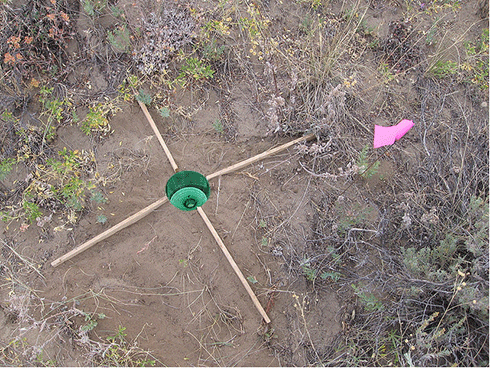
|
|
A pitfall trap: easy-to-use and familiar to ecologists monitoring a range of vertebrate and invertebrate animals. Credit:
RCWinton under Creative Commons Attribution Non-Commercial Licence
|
The impetus to simplify the monitoring process is also driven by a general lack of familiarity and capability with insects among land management organisations.
‘People who can identify birds and plants are a dime a dozen,’ says Dr Andersen. ‘But people who can identify ant species are non-existent. It’s not that it’s difficult, it’s just that people have never learned.’
When asked what needs to be done to overcome the ‘vertebrate centric’ bias of land management agencies in Australia, Dr Andersen says the absence of long-term systematic environmental monitoring is one of the main challenges.
‘We have a very poor history in Australia of monitoring and of feeding back the results of monitoring to improve management – adaptive management. While adaptive management is talked about a lot, it is rarely done.
‘There are many things we take for granted that it’s necessary to measure, like climate – rainfall, temperature, everywhere across the country – and it informs management. It is the same with economic indicators, which are reported daily in our newspapers.
‘Yet our environmental assets are not measured like that.’


